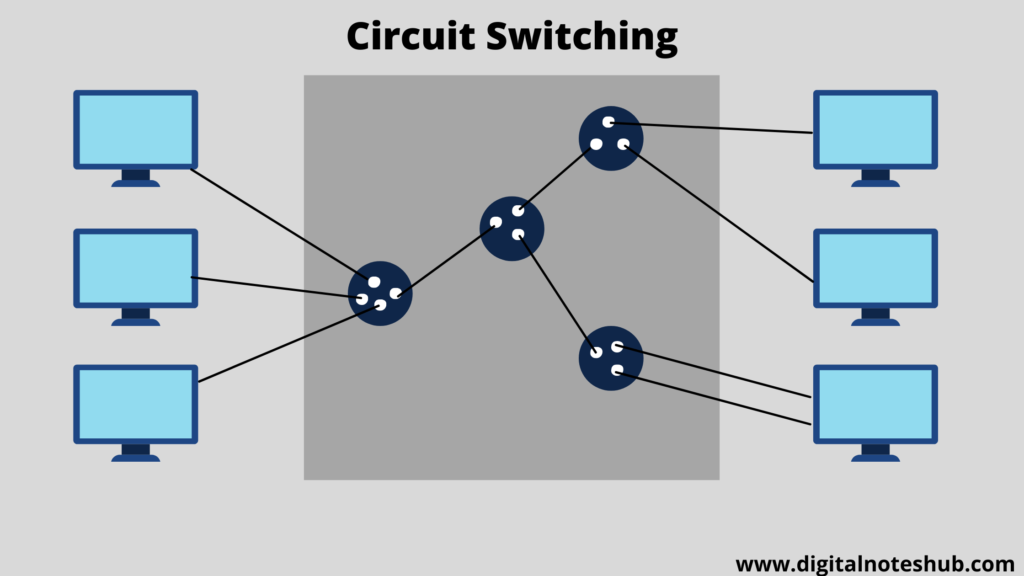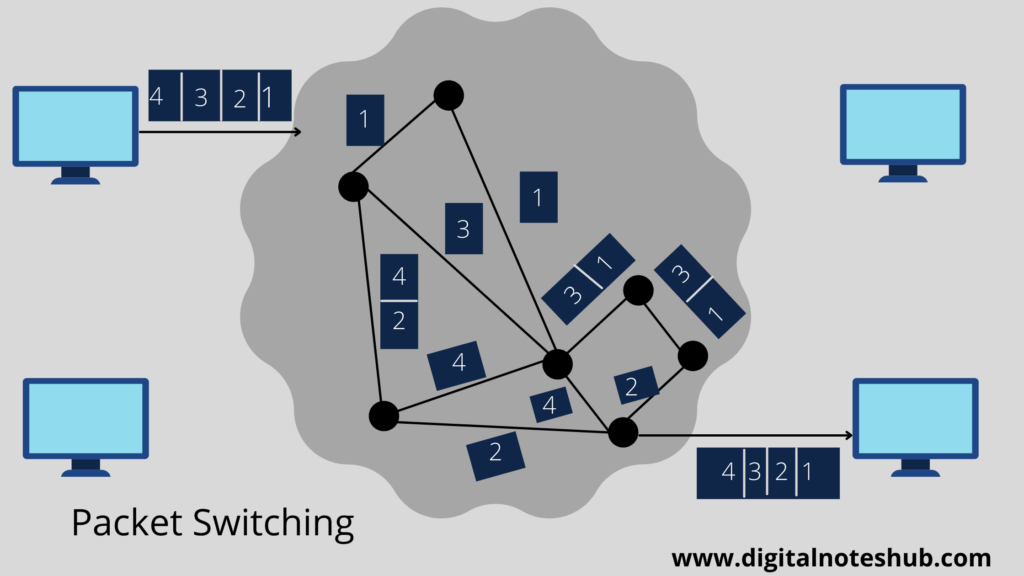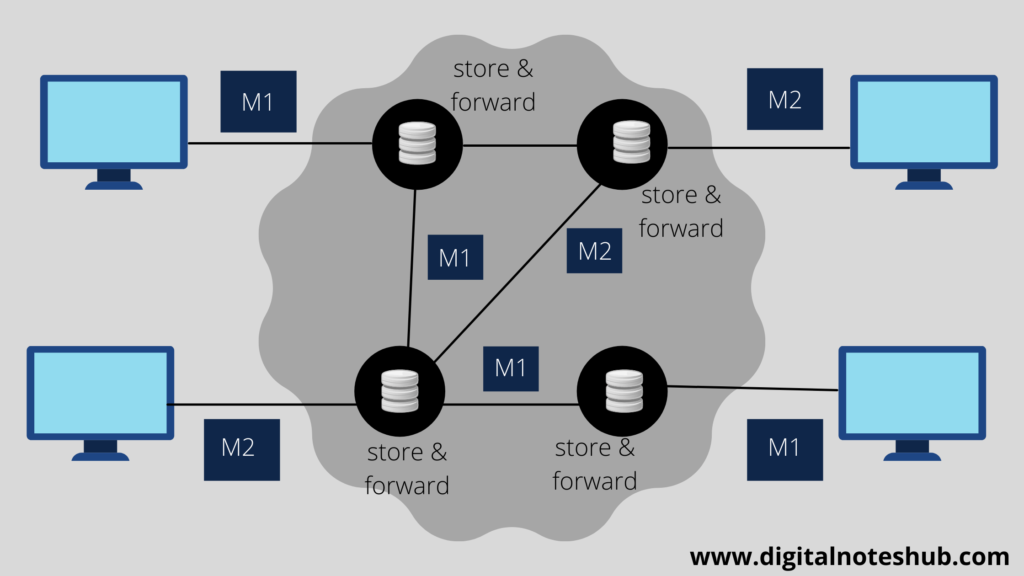In this tutorial, you’re going to learn switching in computer networks and types of switching techniques with help of proper diagrams.
Let’s Get Started, Happy Learning!
Switching in Computer Networks
In broad networks, there can be various paths to send a message from sender to receiver. Switching in computer networks is used to select the best path for data transmission. For this purpose, different switching techniques are used.
The switched network comprises a series of interlink nodes called switches. Switches are hard-wired software devices that are capable of creating temporary connections between two or more devices.
There is a link to switch, but not to each other. The nodes are connected with each other through common devices and some nodes are used to route packages.
Types of Switching Techniques in Computer Networks
There are three types of switching techniques in computer networks, and each technique has a different purpose.
Types of switching techniques in computer networks are as follows.
- Circuit Switching
- Packet Switching
- Message Switching.
Circuit Switching
It is a type of switching in which we set a physical connection between sender and receiver. The connection is set up when the call is made from transmitter to receiver telephone.
Once a call is set up, the dedicated path exits between both ends. The path will continue to exist until the call is disconnected.

The above diagram shows the functionality of circuit switching in computer networks. Every computer has a physical connection to a node, as you can see in the circuit switching diagram. Using nodes, devices can send a message from one end to another
Advantages of Circuit Switching
- It provides a guaranteed data rate.
- No delay in the data flow.
Disadvantages of Circuit Switching
- It requires more bandwidth.
- It takes a long time to establish a connection.
- It is not suitable for high traffic.
Packet Switching
In packet switching, a message is broken into packets for transmission. Each packet has the source, destination, and intermediate node address information.
The entire message is divided into smaller pieces, called packets. Each packet travels independently and contains address information.
These packets travel through the shortest path in a communication network. All the packets are reassembled at the receiving end to make a complete message.
There are two types of packet switching in computer networks, as follows.
- Datagram Packet Switching
- Virtual Circuit Packet Switching

The above diagram shows the concept of packet switching. The message is divided into four packets (i.e. 1,2, 3 and 4). These packets contain the addresses and information.
By travelling through the shortest path, packets reach their destination. At receiving end, the packets are reassembled in the same order (which is 1234) to generate an entire message.
Advantages of Packet Switching
- Bandwidth is reduced.
- If one link goes down, the remaining packets can be sent through another route.
Message Switching
In message switching, the complete message is transferred from one end to another through nodes. There is no physical connection or link between sender and receiver.
The message contains the destination address. Each node stores the message and then forward it to the next node as shown in the below diagram.
In telegraphy, the text message is encoded using the morse code into a sequence of dots and dashes. Each dot or dash is communicated by transmitting a short and long pulse of electrical current. The following diagram shows the concept of message switching in computer networks.

Advantages of Message Switching
- Reduces network traffic
- Network devices share the channel.
Disadvantages
- It does not establish a dedicated path between two communication paths.
Difference Between Circuit, Packet and Message Switching
The following table shows a comparison between the three types of switching techniques in computer networks.
| Circuit Switching | Packet Switching | Message Switching |
|---|---|---|
| There is a physical connection between sender and receiver. | There is no physical connection between sender and receiver. | There is no physical path between sender and receiver. |
| All packets use the same path. | Packets travel independently. | Packets are stored then forwarded. |
| Congestion has occurred per minute. | Congestion has occurred per packet. | There is no congestion in message switching. |
| It is not suitable for handling traffic. | It is suitable for handling high traffic. | It is not suitable for handling traffic. |
The wastage of bandwidth is possible. | There is no wastage of bandwidth. | There is also no wastage of bandwidth. |
| The recording of the packet is not possible. | The recording of the packet is possible. | The recording of the packet is possible. |
| The message is in the form of packets. | The message is in the form of packets. | The message is in the form of blocks. |
| We can use it with a real-time application. | We can use it in real-time applications. | We cannot use it in real-time applications. |
Was This Guide Helpful For You?
Let me know your thoughts in the comment section. If you have any queries or questions then feel free to ask.
